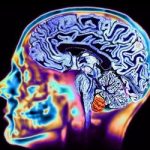 The last few months have seen a number of machine learning based approaches used to analyze medical images and derive the kind of insights that would traditionally be very difficult for humans to derive.
The last few months have seen a number of machine learning based approaches used to analyze medical images and derive the kind of insights that would traditionally be very difficult for humans to derive.
The latest of these comes from a recent paper that describes a project by researchers to detect the age of a brain from MRI scans, whilst also providing an early detection of diseases such as dementia.
The science behind all of this is well known, but traditional approaches can be slow because of the huge amount of data processing involved. For instance, non-brain tissue has to be removed from images, parts of the brain need to be correctly classified and various other things are needed before one can proceed.
Even with the most efficient technology, this can take 24 hours or more, which whilst slowly improving does little to provide doctors with instant decision making capabilities.
Rapid diagnostics
The new approach uses machine learning to analyze the brain from the raw data produced by the MRI scanner, so no cleaning is required. What’s more, the method takes a matter of seconds, thus giving doctors an instant analysis whilst the patient is still in the scanner.
The researchers scanned over 2,000 healthy people, none of whom had any kind of neurological issues. In other words, their brain age and chronological age should be identical.
They then followed the traditional approach whereby 80% of the images were used to train the algorithm, and the remaining 20% used to test it. They then used a further 200 images that weren’t part of the initial cohort to give the algorithm a more rigorous examination. They also tested the algorithm on images that had been analyzed in the more traditional method highlighted earlier.
Proof of concept
When the new method was compared with the previous approach, both determined the age of the patient with a decent degree of accuracy. That is when both had preprocessed data to crunch however.
Where the machine learning approach was clearly superior however was in processing raw MRI data. When fed this, the machine learning approach still produced the same level of accuracy, whereas the traditional approach slipped quite considerably.
Then of course, you have the time savings, with the machine learning approach done in a few seconds versus the 24 hours or more for the existing method.
“Given the right software implementation, brain-predicted age data could be made available to a clinician while the patient is still in the scanner,” the authors say.
The team believe that the method can quickly and effectively be applied to the market, not least because they proved it was equally effective when using a number of different scanners from various manufacturers.
We’ve seen a number of impressive breakthroughs in the use of machine learning to analyze medical images, and this latest project is certainly a worthy entrant in this pantheon. It will be fascinating to see how far this nascent movement progresses in 2017.
Wow, that’s incredible.